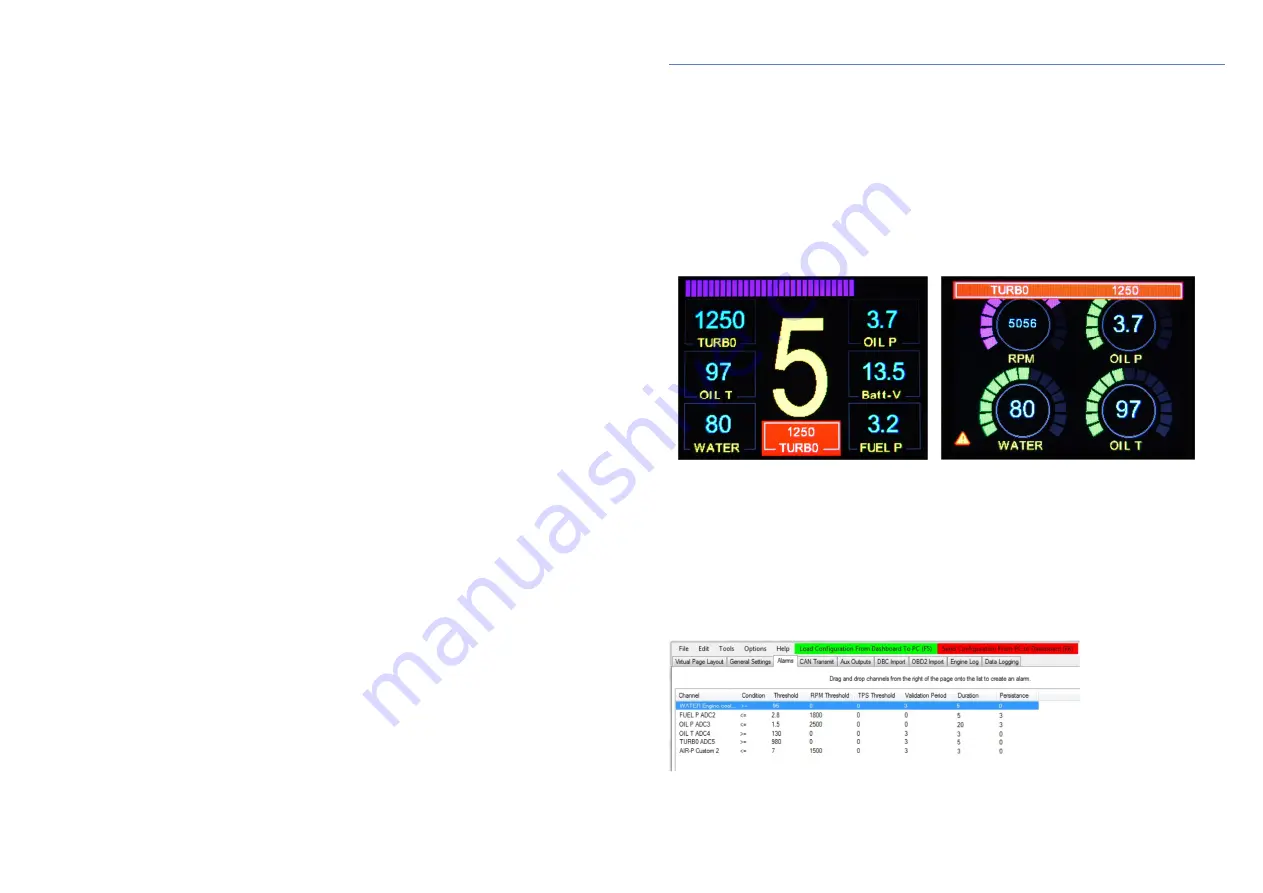
21
Now, select first gear and drive the car at a constant speed. We recommend using about half maximum
engine speed when performing gear sampling. When you’re happy that the speed has stabilised, and is as
constant as possible, press the top button to sample 1
st
gear. After a few seconds the display will change to
show gear 2. At this point select 2
nd
gear and again drive the car at a constant speed before pressing the
sample button. Continue through all the gears until top gear has been sampled. Press “Exit” (bottom button)
to save the sampled ratios. The dash will now revert to the normal display.
The dash should now indicate the correct gear, although it may be necessary to sample 1
st
gear more than
once in order to make it more reliable. This is especially true when working with dog-boxes where you may
encounter transmission ‘shunting’ when driving in a low gear at low engine loads.
As explained above, it’s not possible to display the selected gear if the clutch is disengaged. Therefore to
reduce the likelihood of the wrong gear being displayed during gear changes, an option is provided on the
general settings page to set a M
inimum RPM for gear calculations
. If the engine speed falls below the
set value then the gear digit will display a horizontal line. This option should not be necessary when shifting
a dog gearbox without the clutch.
22
11. Alarms
The Geartronics G-Dash has a fully-featured alarm function that alerts the driver to any problems. This
triggers a warning message to flash up when a channel value falls outside of the acceptable range. Multiple
alarms are supported and are displayed in sequence. The time each alarm is visible in the sequence can
be adjusted in order to prioritise the channel importance. Alarms can be made conditional upon minimum
values for both engine speed and throttle position.
11.1 Alarm behaviour
When an alarm is triggered a warning message is flashed on the screen, the size and position of which is
determined by the type of page being viewed. For a text only page (page style 1), the alarm is displayed
under the gear number and presents as an alternate flashing red/yellow box containing white text with the
channel name and the current value. For dial gauge pages (page styles 3-9) the alarm is displayed as a
flashing bar along the top of the page.
Alarms remain visible until the channel causing the alarm returns to a safe value, or until it is acknowledged
by the driver by pressing the alarm button. A brief press of the button will remove the alarm but leave a
warning triangle icon visible. If the button is pressed momentarily while the icon is present then the alarm
will be displayed again. Pressing and holding the button for 2 seconds will clear the alarm and prevent it
from recurring until the dashboard is reset by power cycling.
11.2 Adding & configuring alarms
To add an alarm, select the Alarm tab at the top of the main window. Channels may then be dragged from
the channel list on the right of the page and dropped onto the main window. A typical alarm configuration is
shown below:
The function of the alarm parameters are described on the following page:
















